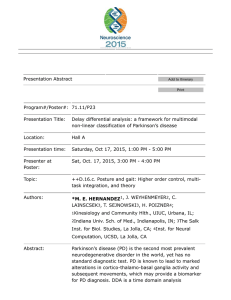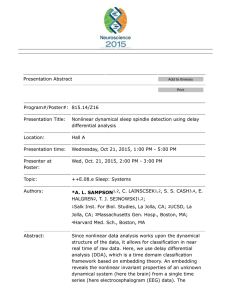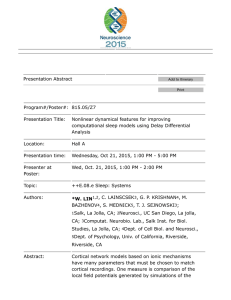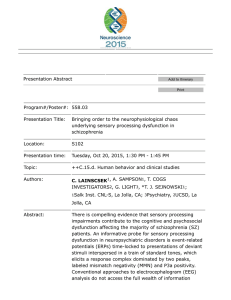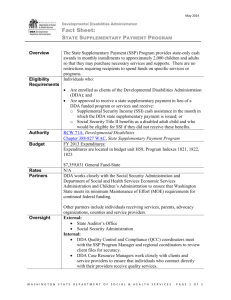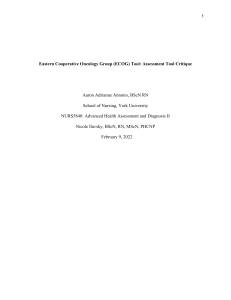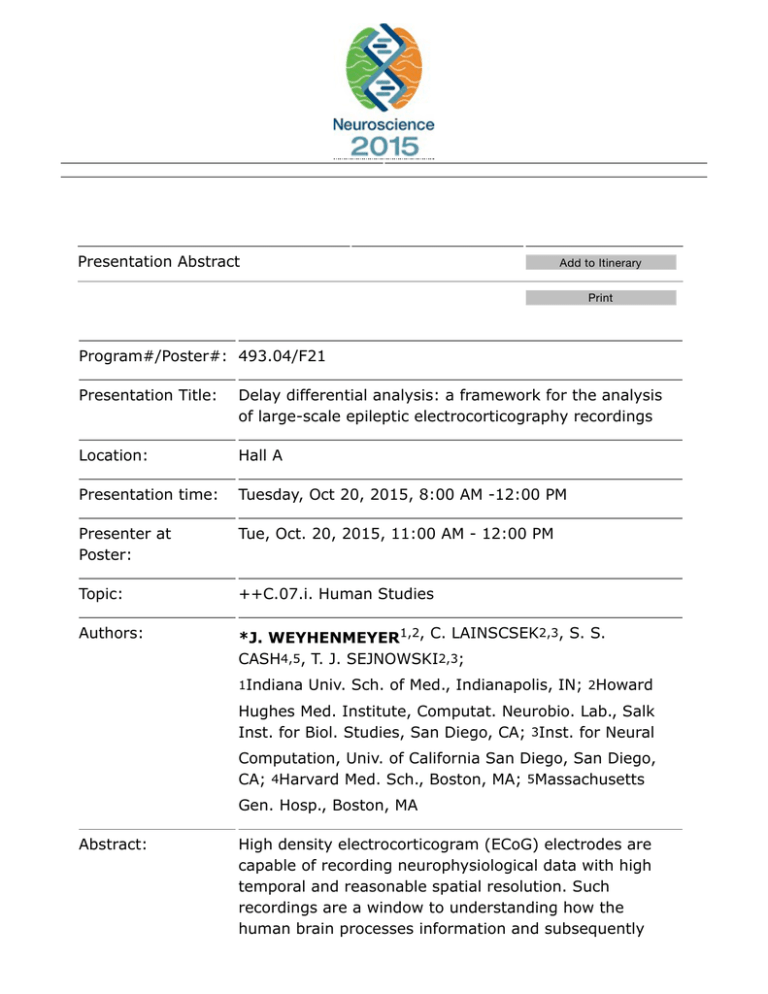
Presentation Abstract
Add to Itinerary
Print
Program#/Poster#: 493.04/F21
Presentation Title:
Delay differential analysis: a framework for the analysis
of large-scale epileptic electrocorticography recordings
Location:
Hall A
Presentation time:
Tuesday, Oct 20, 2015, 8:00 AM -12:00 PM
Presenter at
Poster:
Tue, Oct. 20, 2015, 11:00 AM - 12:00 PM
Topic:
++C.07.i. Human Studies
Authors:
*J. WEYHENMEYER1,2, C. LAINSCSEK2,3, S. S.
CASH4,5, T. J. SEJNOWSKI2,3;
1Indiana
Univ. Sch. of Med., Indianapolis, IN; 2Howard
Hughes Med. Institute, Computat. Neurobio. Lab., Salk
Inst. for Biol. Studies, San Diego, CA; 3Inst. for Neural
Computation, Univ. of California San Diego, San Diego,
CA; 4Harvard Med. Sch., Boston, MA; 5Massachusetts
Gen. Hosp., Boston, MA
Abstract:
High density electrocorticogram (ECoG) electrodes are
capable of recording neurophysiological data with high
temporal and reasonable spatial resolution. Such
recordings are a window to understanding how the
human brain processes information and subsequently
behaves in healthy and pathologic states. At present,
many of the computational methods utilized in the
analysis of ECoG recordings are strictly linear, require
significant pre-processing, and fail to provide high-level
information with respect to the state of the neurological
system. In the following study, we describe and
implement delay differential analysis (DDA) for the
characterization of ECoG data obtained from human
patients with intractable epilepsy. DDA is a time domain
analysis framework based on embedding theory in
nonlinear dynamics. An embedding reveals the nonlinear
invariant properties of an unknown dynamical system
(here the brain) from a single time series (ECoG signals).
The DDA embedding serves as a low-dimensional
nonlinear functional basis onto which the data are
mapped. Since the basis is built on the dynamical
structure of the data, preprocessing of the data, e.g.
filtering, is not necessary. DDA yields a low number of
features (four or less), far fewer than traditional spectral
techniques. This greatly reduces the risk of overfitting
and improves the method's ability to fit classes of data.
One single three term DDA is shown to qualitatively
discriminate between different neurologic states and
epileptic events for a set of 13 patients from the raw
ECoG data. Singular value computation across the
feature space is shown to delineate global and local
dynamics. The global and local dynamics differentiate
electrographic and electroclinical seizures while also
providing insight into a highly localized seizure onset and
diffuse seizure termination. Thus, DDA is shown as a
new form of computational analysis for ECoG data
obtained from the epileptic patient.
Disclosures:
J. Weyhenmeyer: None. C. Lainscsek: None. S.S.
Cash: None. T.J. Sejnowski: None.
Keyword (s):
EPILEPSY
ECoG
Non-linear
Support:
Howard Hughes Medical Institute
Crick-Jacobs Center for Theoretical and Computational
Biology
Note: When adding items to your Itinerary, please click "Add Checked Selections to
My Itinerary" on EACH page of your search results.
At the Meeting
Sessions/Events
Abstracts
Registration
Hotel/Travel
Exhibits
Fellowships, Awards, and Prizes
Frequently Asked Questions
CME
Access the SFN Member Center
OASIS Technical Support.
Monday - Friday, 9 am - 5 pm CT
Phone: 1-217-398-1792
Email: OASIS Helpdesk
Leave OASIS Feedback
The Online
Abstract
Submission and
Invitation
System
© 1996 - 2015
Coe-Truman
Technologies,
Inc. All rights
reserved.

